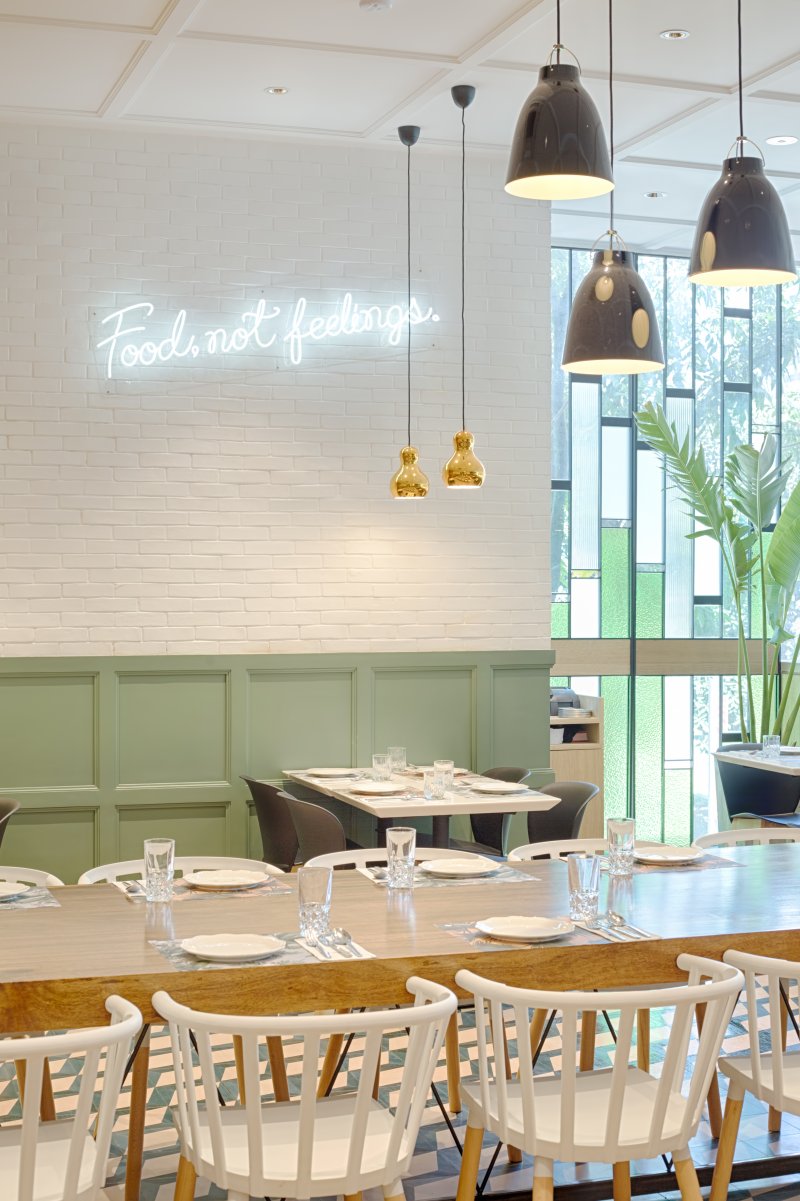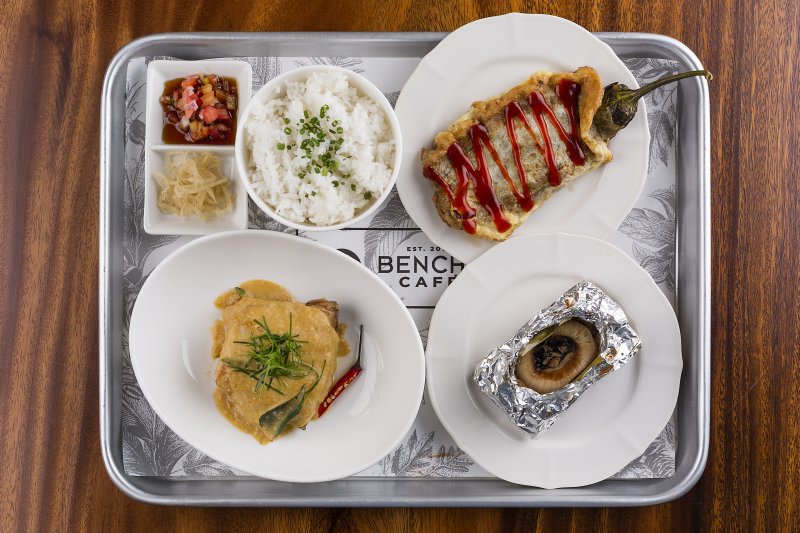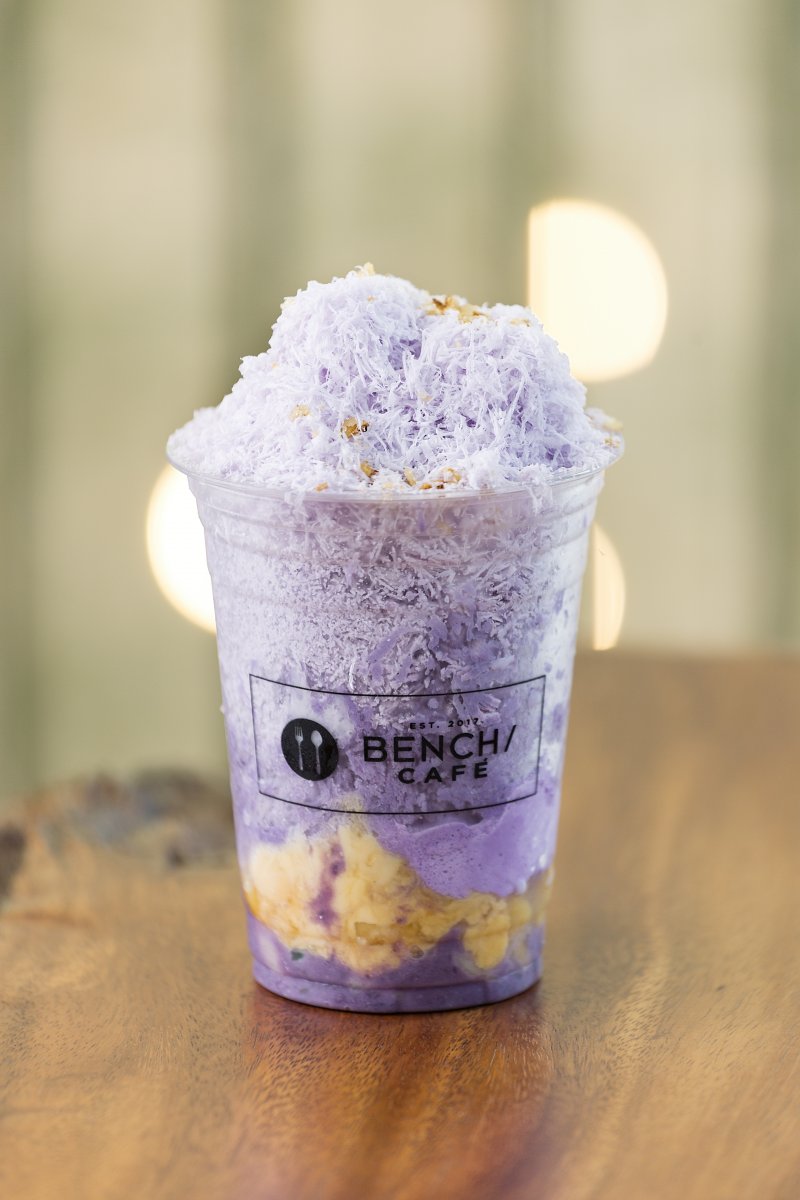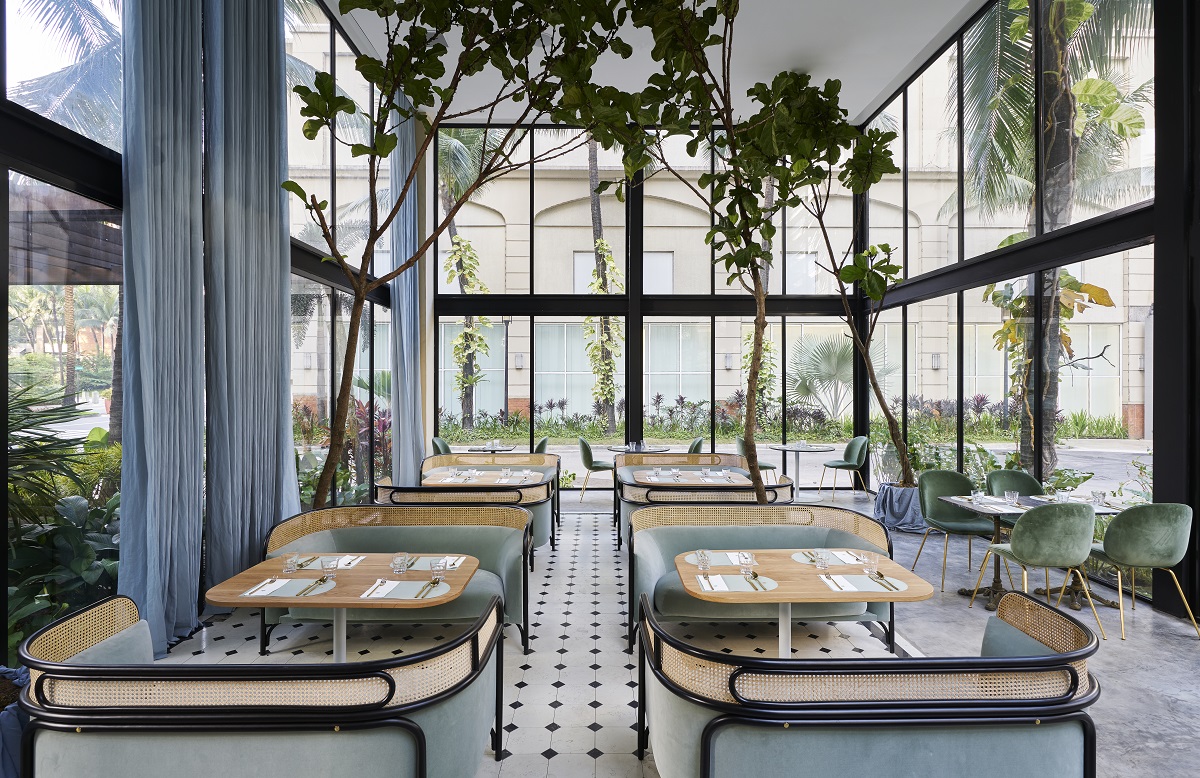When Ben Chan said, “The space was right, the timing was right,” in response to why he finally pursued Bench Café, he may as well have been speaking on behalf of iconic brands diversifying into food.
Granted, Chan didn’t start the trend nor did the marriage between food and fashion manifest only in recent years. Fashion’s fixation with food culminated with the 1961 American romantic comedy “Breakfast at Tiffany’s”—the actual café of which called Blue Box Café opened last year. But the changing retail landscape has forced many brands today to embrace food experiences as a glaringly clear part of future-proofing.
It all makes sense, really. The requirements needed to put up and sustain a restaurant—courageous effort, patience, business acumen, an acceptance of failure—are the stock-in-trade in opening a retail outlet as well. Both also demand focus. And both have a lot more in common than many would assume.
“How you dress and what you eat speak about the way you express yourself,” says Paris-based trend forecaster Cecile Poignant. “Both of them are driven by trends. They both also tell a story, they speak about the labor of love, and they also connect the consumer to an artisan and tradition.”
Brand universe

For Chan, his understanding of the fashion industry has become an important part of his food ventures ever since delving into franchises in 2013 with Paul Boulangerie and Patisserie. One of Chan’s advantages too is that the drawn-out experience afforded him more time to familiarize himself with the market’s consumption patterns and purchasing power before executing his ideas for Bench Café. That extra time, which enabled Chan to bring Japanese franchises Maisen and Pablo to Manila, also led to more opportunities to fine-tune his ideas with Foodee Global Concepts’ Eric Dee and make him more than ready to redefine the Bench brand.
“It’s a natural progression for a retail brand to [have] a lifestyle component rather than a singular one-product thing,” says Dee. “Anything that works well with their consumer, they can do it.” It’s a fact that underpins the fashion business today. Brands aren’t merely selling fashion anymore, they are selling a lifestyle.
“Human interaction is still irreplaceable,” says Ben Chan. And this tangible experience can’t be replicated online. Which makes the idea of food experiences a vital recipe for fashion success.
“You have so many brands that have their own café or restaurant like the Thomas Café of Burberry,” says Poignant. “I think it was in 2004 when brands like Baccarat and Bulgari led the way for industry crossover, merging fashion and luxury travel markets with hotel resorts. And it’s getting more and more that way,” she reveals, citing examples like concept store Merci in Paris’ Marais district that houses various designers, home decor, and three cafés and Dover Street Market and Rose Bakery Café, which are both run by Comme des Garçons.

It’s this lifestyle aspect that makes the flagship Bench store in Bonifacio Global City so absorbing to the Filipino market and perhaps why the café first rolled out in-store instead of as a stand-alone restaurant.
“It’s a contained experience. And in many ways, it is still an experiment,” says Chan. “We want to see if we can create new customer habits or begin new traditions. Will I feel like eating a halo-halo before, during, or after getting my hair colored? Will I reward myself with a tsoknut ice cream after purchasing jeans? It’s like when you go to Harrod’s, you can’t resist having a meal at the food hall or when you shop at Le Bon Marché, it’s a must to pick up a treat at La Grande Épicerie.”
Well spent


As noteworthy as Bench Café’s success is, there’s little uncertainty as to the most evident reason behind fashion’s forays into food: dwell time. “Having a café in your retail space increases the chances that your customer will stay longer and linger within the area,” says Chan. “More time spent in the space means a deeper brand experience.”
At Bench Café, the in-store setup makes the brand’s lifestyle impact even more felt: On the first two floors, one can shop—even create personalized shirts through Bench Design Studio—as well as find the Miguel Pastor-designed café, before heading to Bench Fix and Bench Barbers upstairs. This seemingly simple production signals that, with the right strategy, retail can transition from a mere shop into a more modern big-box store where no matter who you are or what your buying capacity is, you can find something that appeals to you.
“Human interaction is still irreplaceable,” says Chan. And this tangible experience can’t be replicated online. Which makes the idea of food experiences a vital recipe for fashion success. “A café softens the place, making it less about shopping and more about community,” explains fashion designer Todd Snyder to The New York Times. His new Manhattan store was built around tapas bar El Rey Annex.
A remedy for retail

A look across the other side of the city paints a disparate picture. Harlan + Holden’s Glasshouse in Rockwell and Greenbelt Pod in Makati are fan favorites for their beautiful interiors designed to breathe nature—light, sound, exuberance, and all—into otherwise dense urban locations.
Unlike Bench Café, the luxe minimalistic brand’s prospects in food and fashion are completely separate, leaving room for both sides of the business to take on new forms as they progress. The desire to seize a larger consumer base is still there, but the pressure is off.
“We thought about how to bring depth to the brand and the dining experience was the logical next step,” according to Harlan + Holden. “One of our biggest differences is that there will never be a fashion store in the same space as dining. Our apparel and food do not have to be in one space for our clients to feel the level of service and attention to design details.”
As Cecile Poignant suggests, fashion could pick up more than just food’s ability to drive foot traffic. “Food is maybe one of the last things that is different from one place to another so fashion should look at that and try to see how they can adapt to the places in which they are.”
Since its launch, Harlan + Holden’s restaurants have become influential. Formidable, even, for their response to some foodie demands today. In between the GamFratesi glass walls and the outside neighborhood, diners can consume an array of globetrotting choices—bottarga pasta, Iberian chicken, French toast—with an emphasis on simplicity and sophistication. However, many also find comfort simply by being in the branded environment. So while Harlan + Holden’s dining concepts were constructed away from the stores, dwell time doesn’t come at the expense of in-store sales and traffic because people have praised the restaurants’ distinct identity.
“What is interesting to see between [food and fashion’s] differences is that today to have a very expensive and unique dining experience is in a way much more affordable than buying haute couture,” explains Poignant.
Regardless of whether the food is served next to a clothes rack or passes through a changing room, the only measure that matters is how the new experience feels—and tastes—for the customer. But there is more to it than just building a better customer experience.
Last meal

Part of the satisfaction from taking gastronomic risks is the understanding that it will make the brand better in the long run. Improving brand equity by reconfiguring the approach, that is, through food, also improves the odds of future-proofing the business. The downside, though, is its limited viability. Not all brands can confidently pull off a handcrafted wardrobe next to a cocktail concoction with ease and grace like Bench and Harlan + Holden. “It’s always been iconic brands or brands that have so much buzz to it,” says Dee. “It’s really proving how you are able to create that branding [and] you slap it on anything that’s relevant to your consumer and you can make that happen.”

But, as Poignant suggests, fashion could pick up more than just food’s ability to drive foot traffic. “[It’s] what I call the monotony of globalism. It’s the fact that today, the homogeneity of globalization makes the streets of Shanghai not much different from the ones in Paris, London, or Stockholm. And it’s really getting boring. Food is maybe one of the last things that is different from one place to another so fashion should look at that and try to see how they can adapt to the places in which they are.”
Bench Café and Harlan + Holden may be taking different paths, but with their inherently Filipino heritage finding a comfortable place to sit at the global table, both forays should make for a fascinating time in the food industry.
They are, after all, in it for the long haul.
Originally published in F&B Report Vol. 15 No. 2





